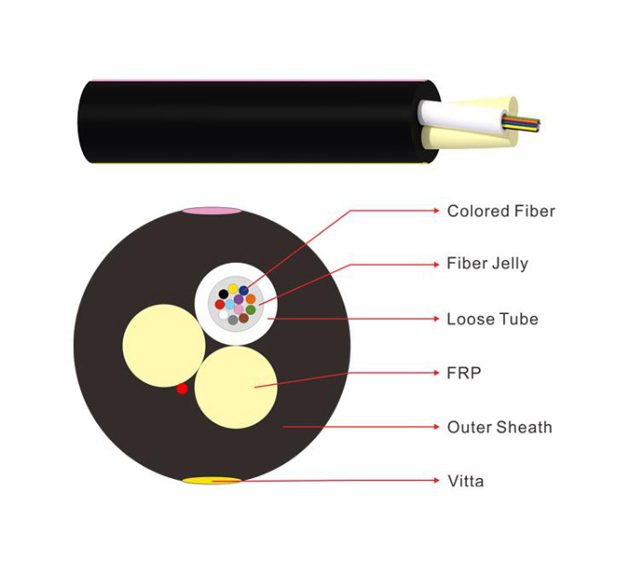The center of the optical cable is usually a core made of glass, and the core is surrounded by a glass envelope with a lower refractive index than the core, so that the optical signal injected into the core is reflected by the cladding interface, so that the optical signal propagates in the core go ahead. Because the optical fiber itself is very fragile and cannot be directly applied to the wiring system, it is usually bundled, with a protective casing outside and a tensile wire in the middle. This is the so-called optical cable, and the optical cable usually contains one or more optical fibers.
Indoor fiber optic cable
According to different use environments, optical cables can be divided into indoor optical cables and outdoor optical cables. the
Indoor optical cables are classified according to the environment in which the optical cables are used, as opposed to outdoor optical cables.
Indoor optical cable is a cable formed by optical fiber (optical transmission carrier) through a certain process. It is mainly composed of optical fiber (glass filament as thin as hair), plastic protective sleeve and plastic sheath. There is no metal such as gold, silver, copper and aluminum in the optical cable, and generally has no recycling value.
Indoor optical cable is a communication line in which a certain number of optical fibers form a cable core in a certain way, and is covered with a sheath, and some are also covered with an outer sheath to realize optical signal transmission.
Indoor optical cables have lower tensile strength and poorer protective layer, but they are also lighter and more economical. Indoor optical cables are mainly suitable for wiring in buildings and connections between network devices.

Indoor optical cable features:
Indoor optical cables have lower tensile strength and poorer protective layer, but they are relatively lighter and more economical. Indoor optical cables are mainly suitable for horizontal wiring subsystems and vertical backbone subsystems. For example, the outdoor optical cable (as shown in Figure 2-29) has a high tensile strength, a thick protective layer, and is usually armored (that is, wrapped in metal skin). Outdoor optical cables are mostly used in building complex subsystems, and can be used in outdoor direct burial, pipeline, overhead and underwater laying and other occasions.
Outdoor fiber optic cable
Outdoor optical cable, used for outdoor optical cable. The opposite is the indoor optical cable.
Outdoor optical cable is a kind of communication line to realize optical signal transmission. The cable core is composed of a certain number of optical fibers in a certain way, and is covered with a sheath, and some are also covered with an outer sheath.
Outdoor optical cable features:
It is mainly composed of optical fiber (glass filament as thin as hair), plastic protective sleeve and plastic sheath. There is no metal such as gold, silver, copper and aluminum in the optical cable, and generally has no recycling value.
Outdoor optical cables have higher tensile strength, thicker protective layers, and are usually armored (that is, wrapped in metal skin). Outdoor optical cables are mainly used for interconnection between buildings and remote networks.
03-21
202502-12
202509-12
202409-05
202408-16
202408-07
202408-06
202408-02
202407-30
202407-29
2024
